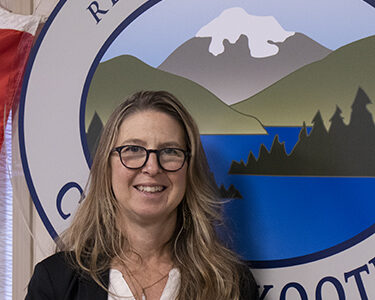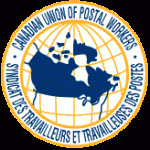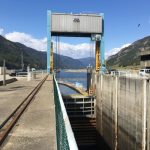Construction on Grohman Narrows Transfer Station sees garbage flowing west
By Suzy Hamilton, The Nelson Daily
Construction will begin on the Regional District of Central Kootenay’s new Grohman Narrows Transfer Station in July, pending approval of the lowest bidder by the board of directors at the upcoming June 20 meeting.
“Staff has made their recommendation to the board,” said Uli Wolf, RDCK General Manager of Environmental Services. “The successful bidder will be announced pending their approval.”
Construction is expected to begin within two weeks of selecting the contractor, he said.
The RDCK tendered bids for the nearly $2 million construction project in late April until closing them on May 23. Wolf said the lowest bidder was recommended to the board after an evaluation was made to determine that the bid met the minimum requirements and references were checked.
The successful bidder was also obliged to do impact and safety testing, he said.
The construction of the new site will involve major earth and rockwork, blasting, draining, road construction, building retaining walls, and leveling flat spaces for bins, scales and trailers.
“We anticipate completion of the project by the fall,” said Wolfe.
The RDCK purchased the 22 acre property for $610,000 two years ago, additionally negotiating a deal with Pacific Insight Electronics next door to use their power, highway access and fire suppression capability.
The location of the Grohman site, five kilometers west of Nelson, was deemed convenient, on the way to the Ootishenia landfill, did not require any new highway configuration and did not impact a large number of residents.
The move means that the Nelson transfer station on the lake will close next summer and use of the Salmo landfill will be downsized to accept wood waste and sewage by-products, Wolf said.
Waste will then be transported to the RDCK’s Ooteshenia Landfill near Castlegar. Wolf said the consolidation of waste materials and trucking could potentially reduce some of the RDCK’s waste management bill by half.
What will the new transfer station look like? “Composting is not anticipated,” said Wolf. “The new site does not lend itself to that activity.”
However, a free store, similar to the one at the Trail transfer station is a possibility. “We need more discussion with the stakeholders.”
As for co-generating power at the Ootishenia Landfill, that was never an option, he said. However, flaring off the methane gas is being considered.
“Flaring removes 90 percent of the green house gases (GHG), “ he said. “We could produce GHG credits and be ahead of the game.”
But changes to the recycling portion of the recovery program are anticipated, he said.
“There is some uncertainty around some recycling programs.”
He is referring to a switch from the present blue bag system to the stewardship program of the Mulit Materials of BC (MMBC), a non-profit recycling organization.
As of May 2014, responsibility for managing the collection and processing system shifts to industry.
While Wolf applauds the shift of the cost of recycling to the producer, “rural areas are not always provided with what we need,” he said, adding that local governments are in close discussion with MMBC.
“We’re hoping that the new system will maintain existing services,” he said.
No one from the nearest neighbour to the facility, Pacific Insight was available for comment.
However, when the story first broke in August of 2012, many Pacific Insight employees expressed concerns about smell, traffic and safety the new site would create during the public consultation process and via a 130-signature petition.
Stuart Ross, Pacific Insight chief executive officer also wrote a letter to the RDCK opposing the new site arguing the site would have a negative impact on the surrounding properties.

























Comments